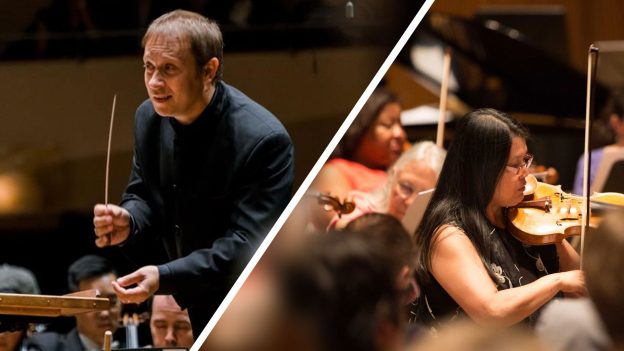Frederick Loewe Theater – New York University
35 West 4th Street
New York, NY 10012
| ABOUT
ACO will hold its 28th Annual Underwood New Music Readings for emerging composers on Thursday and Friday, May 23 and 24, 2019. Led by guest conductor Ludovic Morlot, six composers will hear ACO perform their work live for the first time, receive personalized mentorship, and an archival recording. Three commission opportunities will be available to this year’s participants: the Underwood Commission and Audience Choice each award the chance to write a new work for ACO while the Consortium for Emerging Composers winner will receive a commission to write a new work to be performed by ACO, the Alabama Symphony Orchestra, and American Youth Symphony (Los Angeles). |
TICKETS Open Rehearsal Career Development Workshop Run-Through Performance |
Career Development Workshop Schedule
10:00-11:00a Workshop 1: Beyond the Music – Legal and Technical Issues in Working with Music
Moderator: Ed Yim, American Composers Orchestra
Read more
11:00a-12:30p Workshop 2: Publisher, publicist, and manager
Moderator: Anthony Cheung, composer
Sarah Baird Knight, Calliope PR
Emily Motherwell, OtherARTS
Norman Ryan, European American Music
Read more
12:30-1:30p Lunch on your own
1:30-3:00p Workshop 3: Perspectives on Programming
Moderator: Derek Bermel, mentor composer/ACO Artistic Director
Ludovic Morlot, conductor and Music Director/Seattle Symphony
Carlos Izcaray, conductor and Music Director/American Youth Symphony and Alabama Symphony Orchestra
Read more
SELECTED COMPOSERS
Rodrigo Castro
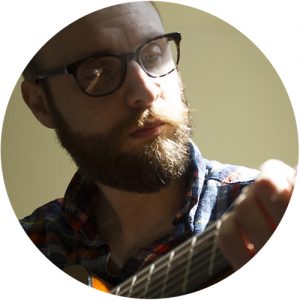
Rodrigo’s (he/him) work is a counterpoint of ideas laid out in mosaic, fractal, and dendrite forms. Imbued with an esoteric spirit, the organic cell-driven structures that he creates in every piece project atmospheres where spectral and playful echoes are chanted in a shifting sense of time. Rodrigo’s music aims to perfume the environment with aleatoric waves that highlight the liminal spaces between individual and universal identities. His esoteric music evokes feelings or memories in each listener with spiritual and metaphorical considerations and with the aim to create musical landscapes that need to exist. As a troubadour of his own time, he uses the orchestra to redefine the vernacular melodies and rhythms of his Mexican and Cuban heritage. Rodrigo’s work is influenced by artists such as Silvio Rodríguez, Bob Dylan, Luis Eduardo Aute and Leonard Cohen.
Rodrigo’s Sound: El Delirio de Carlota, II. Imagenes, III. El Vuelo
Rodrigo Castro's Full Bio La gaviota– Essay no. 1 for orchestra The song La gaviota (The Seagull), by Cuban songwriter Silvio Rodríguez, is used as a main theme for development in this orchestral essay. It is an hommage to this poet and musician, as well as a personal statement about my Cuban heritage and the sense of exile as a Hispanic. This is the first movement for an orchestral suite that will serve as a testament to my search for truth through identity; it offers a message about struggle vis-à-vis peace and reconciliation. Silvio explained to me that he wrote the song La gaviota upon his return from Angola, where he lent his revolutionary efforts by providing music to the soldiers from the Cuban front that supported the natives in their fight for independence. He composed the song after his war experience and from having contemplated the flight of a seagull as a metaphor for the passing by of life. This piece is meant to convey an embodiment of the seagull by the orchestra. It grows from a thematic cell borrowed from Silvio and is then filtered through the prisms of personal experiences, which are conveyed through secondary musical quotations. The piece ends with an orchestration of the natural song of a seagull, giving proper form through a circular closing, as a journey that is distilled back to its purest essence. The references heard throughout – such as Cuban songs that my grandparents sang, a piece by Cuban composer Leo Brouwer, and textures derived from Latin and African rhythms- are presented as spectral echoes that undergo the “textural” variations. The soundscape may be experienced similarly to how our memories come in and out of phase, or at times even overlap, at different points in our lives.
Chen Yihan

Much of Chen Yihan’s (he/him) music seeks for a convergence of different points in time and space, connecting the past to the future and bringing different corners of the world together in an abstract, poetic, and emotional way that transcends culture and epoch. His music is often a play of lines, space, and intensity in a calligraphic way, reflecting his cultural roots in the Chinese arts. As a composer, Chen Yihan’s music has been performed by the Symphony Orchestra of the National Opera House (China), The Juilliard Orchestra, Longcheng Symphony Orchestra, The New York Virtuoso Singers, Cantoría Hong Kong, the Entre Madeiras Trio, among others. He has earned honors such as two ASCAP Foundation Morton Gould Young Composer Awards, the Jacobs School of Music Dean’s Prize, a winner of the Juilliard orchestra competition, to name a few.
Yihan’s Sound: Luanta, for violin and piano
He Yujie, violin
Chen Yandi, piano
Chen Yihan's Full Bio Chen Yihan is currently pursuing a Ph.D. in composition at Princeton University and holds a master’s degree in composition from the Juilliard School and bachelor’s degrees in composition and piano from the Jacobs School of Music, having studied with Samuel Adler, Claude Baker, Arnaldo Cohen, Don Freund, P.Q. Phan, Christopher Rouse, and Sven-David Sandström, Aaron Travers, among others. SPIRITUS 呼吸萬物的氣息
Breathing the spirit of this world,
I’m grateful to Heaven above.
感恩上天
Photo Credit: Li Qi
Jack Hughes

Jack Hughes (he/him) is a Chicago-based composer who is interested in exploring the ways in which the inner life of sound interacts with a listener’s mind, body and soul. While Jack avoids being prescriptive in the response his music elicits, one of his core values is for his music be meaningful on some level to all audience members, regardless of their musical knowledge. He seeks to foster musical experiences in which imagination, empathy, and trust flow in all directions among the composer, performers, and listeners. He is currently a PhD candidate at the University of Chicago, where he studies with Augusta Read Thomas. Jack Hughes received his Bachelor of Music degree in composition and theory at the Cleveland Institute of Music, in the studio of Keith Fitch. Jack served as composer fellow of San Francisco’s Volti choral ensemble in 2017 and of the Canton Symphony Orchestra in 2014.
Jack’s Sound: String Quartet, Scene III
Performed by the Kontras Quartet
Jack Hughes' Full Bio Needlepoint Photo Credit: Phillip Sossenheimer
This piece was inspired by the craft of needlepoint, in which different-colored yarns are stitched onto a stiff canvas to produce a pattern or image. What inspires me about this art form are the contrasts it contains: between the flexible strands of yarn and the rigid canvas and between the small complex patterns that combine to form larger shapes and images. Throughout the work, small melodic threads are stitched onto a slowly-evolving harmonic grid. Dynamic swells produce rapid changes between the foreground and background, while stark tempo changes create a sense of ebb and flow as the music sometimes surges forward and sometimes seems to be held back against its will. Essentially, this piece stems from my love for orchestral performance and from the sonic complexity that emerges when a multitude of small sounds come together to form a coherent musical whole.
inti figgis-vizueta
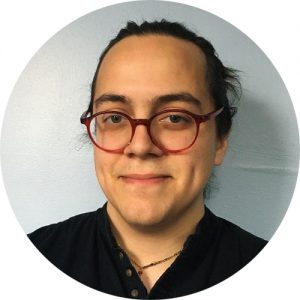
inti figgis-vizueta (she/they) is a Brooklyn-based composer whose music focuses on combinations of various notational schemata, disparate and overlaid sonic plans, and collaborative unlearning of dominant vernaculars. She often writes magically real musics through the lens of personal identities, braiding a childhood of overlapping immigrant communities and Black-founded Freedom schools—in Chocolate City (DC)—with Andean heritage and a deep connection to land(s). Reviewers say her music constantly toes the line between “all turbulence” and “quietly focused” (National Sawdust Log). inti has most recently been named one of JACK Quartet’s inaugural JACK Studio artists; won the 2019 Hildegard Competition from National Sawdust, which culminated in the commission and premiere of Openwork, Knotted object // Trellis in bloom // lightning ache; been featured in the 2019 Underwood New Music Readings, which included the American Composer’s Orchestra reading Symphony for the Body; and participated in the 2019 Mizzou International Composer’s Festival, which featured Alarm Will Sound premiering Primavera Crown.
inti’s Sound: whose name do you make thunder the room? for string quartet and playback
inti figgis-vizueta's Full Bio Symphony for the Body Symphony for the Body focuses on the player. The principles of individual choice and agency are core to compositional structure, while the natural rhythms of each performer are highlighted throughout the work. The graphic nature of the score encourages free interpretation of articulation, register, and timing. The piece works to deconstruct hierarchies within the orchestra, creating opportunities written in for each instrumental family to facilitate or lead a movement. Players are encouraged to individually choose key elements of music, such as register, duration, and pitch within comfortable parameters while utilizing the natural resonant qualities of the instruments themselves. Inspired from the work of Pauline Oliveros, Symphony for the Body is driven by the rise and fall of breath, communal listening, and a freedom to choose your own path through its seven movements. Photo credit: Ella Joklik
Dedicated to Pauline Oliveros
Jihyun Kim
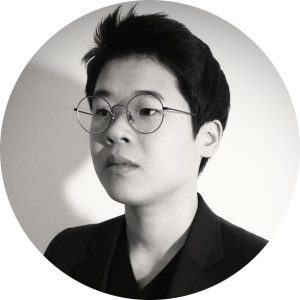
Jihyun Kim’s (she/her) music has been performed in the prestigious venues around the world, including Weill Recital Hall at Carnegie Hall, the Cloisters at the Metropolitan Museum of Art, Bruno Walter Auditorium at Lincoln Center, Seiji Ozawa Hall, Harris Hall in Aspen, DiMenna Center, Palazzo Medici Riccardi in Florence Italy, and Seoul Arts Center in Korea. Jihyun’s works were performed by eminent ensembles such as Tanglewood New Fromm Players, Aspen Contemporary Ensemble, J ACK Quartet, PUBLIQuartet, Asciano Quartet, Karien Ensemble, Switch Ensemble, Aspen Conducting Academy Orchestra, Cornell Festival Orchestra, Bloomington Trio, and Chanticleer LAB Choir, and were featured in Tanglewood Music Center, Aspen Music Festival, Mayfest, the University of South Florida New Music Festival, Midwest Composers Symposium, Korean Music Expo.
Jihyun’s Sound: Once Upon a Time for Pierrot ensemble plus percussion
Aspen Contemporary Ensemble (Cond. Timothy Weiss)
Jihyun Kim's Full Bio A Tramp in the Assembly Line The movie, Modern Times (1936), is a comedy film written and directed by Charlie Chaplin. The “Tramp” character struggles to survive in the modern, industrialized world. In the movie, he suffers a nervous break-down from ever-so-hardworking machines, makes clumsy mistakes that got him imprisoned, then when he is out of the prison he participates in the worker’s protest, meets the love of his life which ends up on both fleeing out of town, and so on. Despite the satire is conveyed underneath, the story is filled with dance and humor and eventually ends with a hopeful message. My intention is not about conveying the message of Modern Times. Rather, I wanted to depict the scenes that were left with me with strong impressions: the rotating motion of the conveyor belt; the regular-pulsed machinery sound from the factory; the clown-like walking gesture of the character “Tramp”; and black-and-white scenes without sound. Also, there were other inspirations I had from the movie, such as the old big-band version of the song “Caravan” (although it was never quoted in the actual movie), and the image of a person looking into the Kinetoscope. With these selected scenes, I wanted to create a musical panorama – enumerating it with equal importance and independence, instead of a single plot with a logical flow. As the musical ideas shift from one to another, a sense of discontinuity can be found between the sections. In the movie, the character “Tramp” functions as a medium to put together different stories into single plot. In my work, a consistent pulse in the background, an oscillation of notes, and a limited pitch material act as apparatuses to bind the piece into a single whole.
Aaron Israel Levin
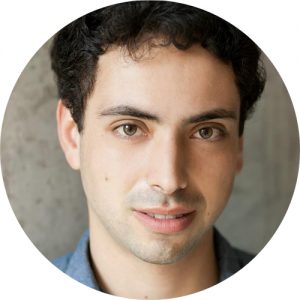
Aaron Israel Levin (he/him) writes music that is guided by the emotional dynamism of storytelling and drama. He draws from a variety of musical and non-musical influences – including film, theater, and performance art – to create compositions that are both personal and wide-ranging. Aaron’s music has been performed by the Bent Frequency Duo, Fifth House Ensemble, loadbang, Pavia Winds, the Yale Philharmonia, mezzo-sopranos Kayleigh Butcher and Lisa Neher, and percussionists Dmitrii Nilov and Sam Um. Passionate about collaboration, Aaron frequently works with artists from different mediums. He has collaborated multiple times with playwright Christopher Gabriel Nuñéz, and has also developed projects with projection designer Johnny Moreno, and choreographers Celeste Miller and Mary Gwin.
Aaron’s Sound: Tree Giant, for flute, clarinet, violin, cello, percussion, and piano
Aaron Israel Levin's Full Bio Originally from St. Paul, Minnesota, Aaron earned his BA in music from Grinnell College in Iowa, where he studied composition with Eric McIntyre and John Rommereim. He will receive his MM in composition from the Yale School of Music this May, where his teachers included Martin Bresnick, Aaron Jay Kernis, David Lang, Hannah Lash, and Christopher Theofanidis. In Between In Between takes its inspiration from movies about making movies, like David Lynch’s Mulholland Drive, or Federico Fellini’s 8 ½. In these films, the lives of fictitious filmmakers “off-set” often become intermingled with the film they’re attempting to make. In Between takes this premise as a jumping-off point, and approaches the orchestra like a crew of filmmakers. Specifically, the whip – a percussion instrument that makes a distinctive whack – stands in for the director’s clapperboard. Every time the whip is sounded, it signifies an “action” for the filming to begin, or a “cut” for the filming to stop. The musical characters that take place during the “action” and “cut” sequences come into conflict with each other, evoking the tension and inner turmoil that frequently accompany the artistic process. The title refers to what happens in between “takes,” and the inevitable merging of off- and on-set. Photo credit: Eric Snoza


